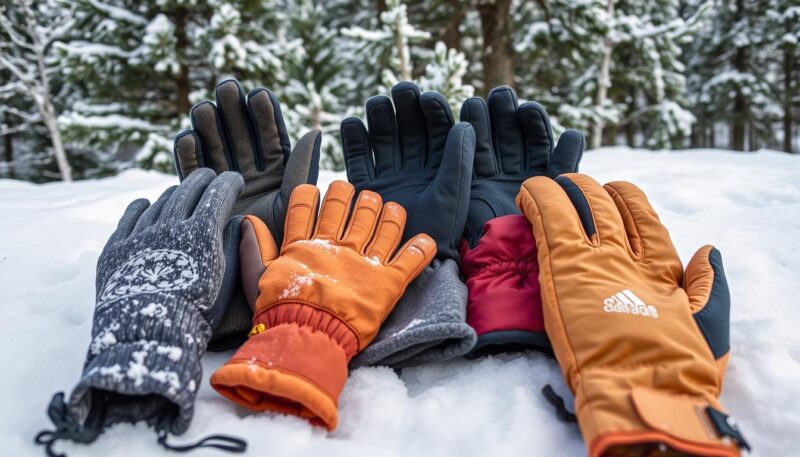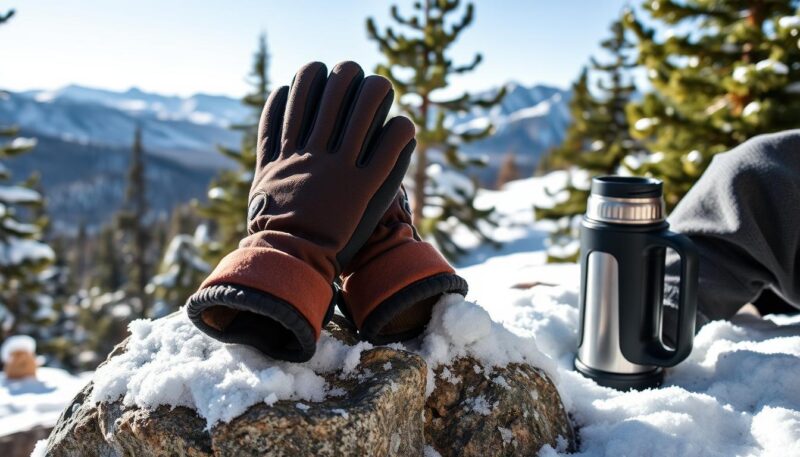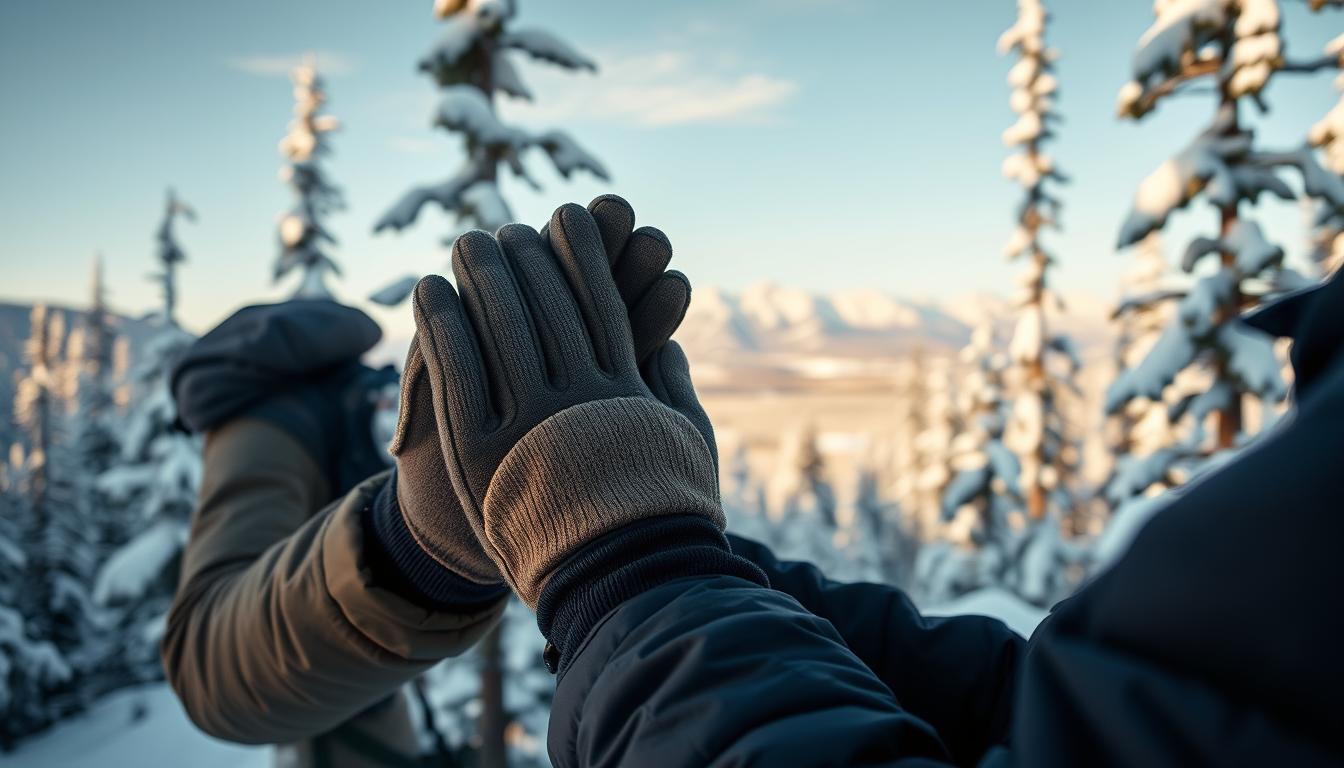As you lace up your boots and prepare for a winter hiking adventure, you might be wondering how to keep hands warm while navigating the challenges that cold weather presents. Many hikers, perhaps even you, have experienced those frustrating moments when cold hands become a distraction, turning an exhilarating trek into a discomforting struggle. During a 650 km hike in Bolivia, temperatures ranged from a mild 15°C (59°F) to a chilling -18°C (0°F). Those extreme shifts emphasize the necessity of effective strategies to maintain warmth. Fortunately, this article covers winter hiking tips for hands that will help ensure your experience remains enjoyable, no matter the temperature outside.
Throughout this guide, we will delve into the essential gear, layering systems, and practical tips that can transform your winter hiking experiences. Whether you’re setting out on a day hike or a longer backpacking expedition, learning how to keep your hands warm needs to be a top priority. From the recommended brands to personal anecdotes from my time in the wilderness, you’ll find valuable insights to prevent cold hands while hiking. By the end of this article, you’ll feel empowered with the knowledge to tackle winter trails confidently.
Understanding the Importance of Keeping Your Hands Warm
Staying comfortable while hiking in cold weather is essential for an enjoyable experience. Cold hands can be particularly problematic, impacting not only comfort but also safety. You may find that when your hands become cold, your ability to perform tasks diminishes, leading to frustration and potential risks. To enhance your outdoor adventures, it’s vital to understand the significance of keeping hands warm hiking.
Why Cold Hands Can Ruin Your Hiking Experience
When hiking in cold weather, cold hands can contribute to a negative experience by causing discomfort and hindering mobility. Cold fingers can lead to accidents, especially if you’re handling gear or relying on dexterity to navigate trails. You may not realize that cold hands can lead to frostbite, a serious condition that occurs when skin and tissue freeze. Understanding this risk can motivate you to prioritize protecting hands in winter hiking.
Physical Symptoms of Cold Hands
A common concern when hiking is the physical symptoms associated with cold hands. You might experience numbness, tingling, or even a pale appearance in your fingers, all indicators of inadequate blood flow. Fatigue in your hands can arise from prolonged exposure to cold, reducing grip strength, which can be dangerous if you’re tackling challenging terrains. Taking the necessary precautions can prevent these symptoms from affecting your climb.
The Connection Between Hands and Overall Body Temperature
The hands play a crucial role in overall body temperature regulation. The optimal operating temperature for the human body is around 98.6°F (37°C). When temperatures drop significantly, shivering and vasoconstriction occur as a physiological response to preserve core warmth. As the body prioritizes heat for vital organs, your extremities can suffer, underscoring the importance of keeping hands warm while hiking.
How to Keep Hands Warm: Essential Gear for Winter Hiking
Winter hiking can bring stunning landscapes and refreshing air, but it also demands proper precautions to keep your hands warm. The right outdoor winter hand gear plays a significant role in this effort. By understanding the different layers and types of gloves available, you can better prepare for your adventure and protect your hands in cold conditions.
Layering Systems for Your Hands
A proper layering system is essential for maintaining warmth. For your hands, consider using the following layers:
- Base Layer: Thin liner gloves made of moisture-wicking materials to keep your hands dry.
- Insulating Layer: One or two medium to light insulating mittens crafted from wool or fleece.
- Outer Layer: A windproof shell is crucial to protect against harsh winds and moisture.
Keeping your hands dry is vital, as moisture rapidly decreases warmth. Prioritize non-cotton fabrics to avoid losing thermal insulation properties when wet.
Recommended Winter Gloves and Mittens
Choosing the right winter gloves for hiking can make a world of difference. Consider options like:
- Gore-Tex gloves with removable fleece liners for temperature adaptability.
- Mittens offering greater warmth than gloves, despite reduced dexterity.
- Combining PossumDown gloves with Backpacking Light Featherlite Vapor Mitts for extreme temperatures.
Brands like Cabela’s and Mountain Gear provide specialized waterproof-breathable gloves that enhance comfort and performance, keeping your hands warm throughout your hike.
Winter Hiking Hand Warmers: A Must-Have Accessory
Hand warmers for hiking serve as an excellent supplementary source of heat. Brands like Hot Hands can provide warmth for up to ten hours, making them indispensable for longer excursions. Place hand warmers inside your mitts or near your pulse points for maximum efficacy. Chemical warmers are often included in winter hiking kits as a backup, ensuring effective temperature management for your fingers.
Be cautious when using hand warmers, especially if someone is suffering from hypothermia, as improper use can lead to burns. Always keep spare warmers handy and remember that they can be reused by storing them in non-oxygenated spaces, such as a Ziploc bag, after activation.

| Type | Warmth Level | Dexterity | Best For |
|---|---|---|---|
| Liner Gloves | Low | High | Base Layer |
| Insulating Mittens | High | Low | Cold Weather |
| Waterproof Gloves | Medium | Medium | Wet Conditions |
| Chemical Hand Warmers | Very High | N/A | Emergency Use |
With the right layering systems, recommended gloves and mittens, and the essential hand warmers for hiking, you can keep your hands warm and enjoy your winter adventures to the fullest.
Practical Tips for Keeping Your Hands Warm While Hiking
Venturing out for hiking in freezing temperatures can be invigorating yet challenging. To ensure a comfortable experience, focusing on keeping your hands warm is essential. Here are some well-proven strategies that you can implement on your next winter adventure.
Layer Your Clothing Properly
Effective layering is a cornerstone technique in maintaining warmth during winter hikes. A three-layered system comprising a base layer, mid layer, and outer layer works wonders. The use of liner gloves paired with mid-weight fleece gloves offers an excellent way to keep your hands insulated. Avoid tight clothing as it restricts blood flow, which may lead to cold extremities. Ensure your outer layers are easily accessible to make adjustments as needed.
Be Bold, Start Cold: Embrace Movement
A proactive approach to movement can be beneficial. Embrace the “be bold, start cold” concept, which encourages you to begin your hike at a cooler temperature. As your body warms up through activity, you will stay comfortable without excessive sweating. Techniques like swinging your arms overhead or stomping your feet can significantly boost blood flow to your hands.
Short Breaks and Eating Regularly
Taking short breaks while hiking helps maintain warmth. Regularly snacking on calorie-dense foods can keep your metabolism active, aiding in overall warmth. Staying hydrated is equally important; aim to drink water every hour. This helps circulate warm blood throughout your body. Avoid carbonated drinks or alcohol, as they may impede proper hydration.
Using Your Gear Effectively
Winter hiking accessories serve not only for functionality but also to enhance your comfort. Having a thermos filled with warm fluids can provide an extra layer of warmth as you hike. Utilizing chemical or electric hand warmers can offer immediate relief. Chemical hand warmers can last up to eight hours, making them an essential item during longer hikes. Keeping an extra pair of gloves in your backpack serves as a safeguard against moisture exposure, ensuring your hands remain warm.

| Item | Type | Heat Duration |
|---|---|---|
| Chemical Hand Warmers | Disposable | Up to 8 hours |
| Electric Hand Warmers | Rechargeable | 2-4 hours |
| Thermos | Insulated for liquids | N/A |
| Fleece Gloves | Liner | N/A |
| Waterproof Gloves | Outer Layer | N/A |
Adapting these practical tips will equip you to tackle the challenges of winter hiking while keeping your hands warm and functional. Preparedness makes all the difference when faced with the elements.
Conclusion
As your winter adventures unfold, remember that knowing how to keep hands warm outdoors is essential for a safe and enjoyable experience. By utilizing appropriate gear, such as insulating gloves and high-performance mittens, you can combat the biting cold that threatens your hiking hand warmth solutions. Effective layering, proper clothing choices, and frequent short breaks not only maintain your body temperature but also enhance your overall comfort on the trail.
Incorporating simple strategies, like engaging in quick movements to elevate your body temperature or opting for waterproof clothing, can significantly reduce the risk of cold hands during your hikes. Research shows that remaining dry is crucial; wet clothing can conduct heat away much faster than dry garments, making dry insulation a priority. Remember, even carrying a spare pair of gloves can halve your risk of frostbite and cold-related injuries.
Ultimately, the key to enjoying winter hiking lies in your preparation. By following the gear recommendations and practical tips detailed throughout this article, you empower yourself to embrace the great outdoors, no matter how chilly it gets. With a little focus on maintaining warmth, you can confidently explore the beauty of winter landscapes, ensuring a memorable and invigorating experience every time.

